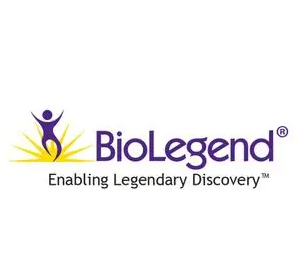Brilliant Violet 605™ anti-mouse CD366 (Tim-
- 产品名称:
- Brilliant Violet 605™ anti-mouse CD366 (Tim-
- 产品类别:
- 抗体
- 产品编号:
- 119721
- 产品应用:
- 119721
- Verified Reactivity
- Mouse
- Antibody Type
- Monoclonal
- Host Species
- Rat
- Formulation
- Phosphate-buffered solution, pH 7.2, containing 0.09% sodium azide and BSA (origin USA).
- Preparation
- The antibody was purified by affinity chromatography and conjugated with Brilliant Violet 605? under optimal conditions.
- Concentration
- 0.2 mg/ml
- Storage & Handling
- The antibody solution should be stored undiluted between 2°C and 8°C, and protected from prolonged exposure to light. Do not freeze.
- Application
-
FC - Quality tested
- Recommended Usage
Each lot of this antibody is quality control tested by immunofluorescent staining with flow cytometric analysis. For flow cytometric staining, the suggested use of this reagent is ≤0.5 ?g per million cells in 100 ?l volume. It is recommended that the reagent be titrated for optimal performance for each application.
Brilliant Violet 605? excites at 405 nm and emits at 603 nm. The bandpass filter 610/20 nm is recommended for detection, although filter optimization may be required depending on other fluorophores used. Be sure to verify that your cytometer configuration and software setup are appropriate for detecting this channel. Refer to your instrument manual or manufacturer for support. Brilliant Violet 605? is a trademark of Sirigen Group Ltd.
Learn more about Brilliant Violet?.
This product is subject to proprietary rights of Sirigen Inc. and is made and sold under license from Sirigen Inc. The purchase of this product conveys to the buyer a non-transferable right to use the purchased product for research purposes only. This product may not be resold or incorporated in any manner into another product for resale. Any use for therapeutics or diagnostics is strictly prohibited. This product is covered by U.S. Patent(s), pending patent applications and foreign equivalents. - Excitation Laser
- Violet Laser (405 nm)
- Application Notes
Additional reported applications (for relevant formats) include: in vitro1 and in vivo2 blocking of Tim-3, and immunohistochemical staining of frozen sections2. The Ultra-LEAF? purified antibody (Endotoxin <0.01 EU/?g, Azide-Free, 0.2 ?m filtered) is recommended for functional assays (Cat. Nos. 119731-119736).
- Application References
(PubMed link indicates BioLegend citation) -
- Nakae S, et al. 2007. Blood 110(7):2565-8. (FC, Block)
- Oikawa T, et al. 2006. J. Immunol. 177(7):4281-7. (FC, Block, IHC)
- Product Citations
-
- Qi Z, et al. 2022. Nat Commun. 13:182. PubMed
- Uzhachenko RV, et al. 2021. Cell Reports. 35(1):108944. PubMed
- Mitchell JE, et al. 2021. Cell Reports. 35(2):108966. PubMed
- Wagle MV, et al. 2021. Nat Commun. 12:2782. PubMed
- Chen Z et al. 2019. Immunity. 51(5):840-855 . PubMed
- Poillet-Perez L, et al. 2020. Nat Cancer. 1:923. PubMed
- Mirando AC, et al. 2020. Oncoimmunology. 9:1760685. PubMed
- Gabriel SS, et al. 2021. Immunity. 54(8):1698-1714.e5. PubMed
- Beltra JC, et al. 2020. Immunity. 52(5):825-841. PubMed
- Chen Z, et al. 2021. Cell. 184(5):1262-1280.e22. PubMed
- Di Pilato M, et al. 2021. Cell. 184(17):4512-4530.e22. PubMed
- Freed-Pastor WA, et al. 2021. Cancer Cell. :. PubMed
- Gangoso E, et al. 2021. Cell. 184:2454. PubMed
- Dammeijer F, et al. 2020. Cancer Cell. 38(5):685-700.e8. PubMed
- RRID
- AB_2616907 (BioLegend Cat. No. 119721)
- Structure
- Transmembrane protein containing immunoglobulin domain and mucin-like domain; predicted molecular weight 31 kD; can exist as a soluble form lacking mucin and transmembrane domains
- Distribution
-
Expressed on activated Th1 lymphocytes and CD11b+ macrophages
- Function
- May play a role in the development of immune responses and the development of Th1-mediated responses
- Ligand/Receptor
- Putative ligand on resting CD4+ lymphocytes
- Cell Type
- Macrophages, Th1
- Biology Area
- Immunology, Inhibitory Molecules
- Molecular Family
- CD Molecules, Immune Checkpoint Receptors
- Antigen References
-
1. Sabatos CA, et al. 2003. Nat. Immunol. 4:1102.
2. Sanchez-Fueyo A, et al. 2003. Nat. Immunol. 4:1102.
3. Kuchroo VK, et al. 2003. Nat. Rev. Immunol. 3:454.
4. Mooney L, et al. 2002. Nature 415:536.
- Gene ID
- 171285 View all products for this Gene ID
- UniProt
- View information about CD366 on UniProt.org
